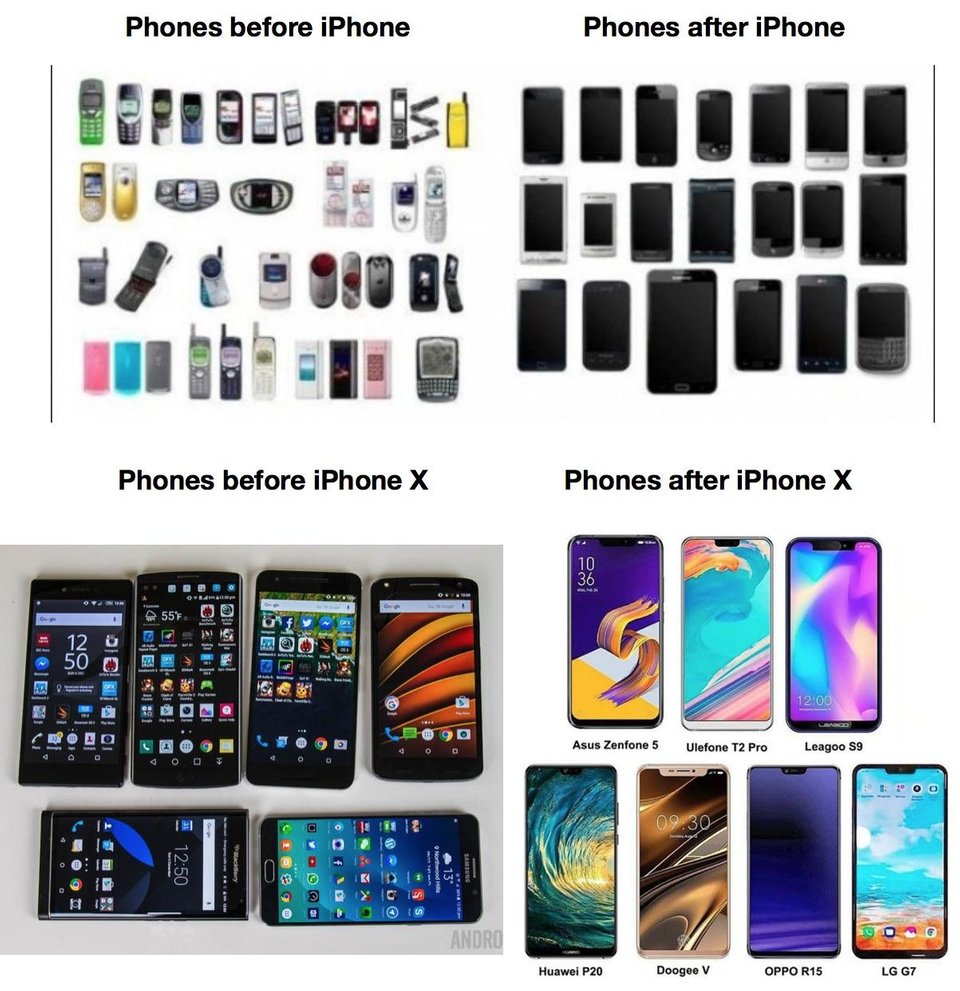Apple has never really been first to market with a new product, but there’s absolutely no question that the company is a trendsetter. Every single product Apple releases immediately sets the bar in its category, and Apple’s rivals rush to copy the company’s designs. It was true of Apple’s desktop computers and then of its MacBook laptops. It was true of the iPod, the iPad, and the Apple Watch. Look at how long true wireless earbuds had been around before Apple released its AirPods. Once that happened, every electronics company under the sun followed suit.
Of course, there’s one Apple product in particular that Apple’s competitors love to copy more than any other, and it’s always the first thing that comes to mind when people think of companies copying Apple. That’s right, we’re talking about the iPhone, and a nifty new illustration that popped up this week serves as a great reminder of how much Android phone makers love to copy Apple’s iPhone designs.
It’s amusing that so many young people think that Apple’s iPhone was the first smartphone. Those of us who have been around long enough know that smartphones were around for a long, long time before Apple’s iPhone debuted in early 2007. On the other hand, there’s no question that the iPhone was anything but a complete reimagining of the smartphone, and it reshaped the industry almost instantly.
That word “reshaped” is actually appropriate both figuratively and literally, and a new graphic put together by a Reddit user serves as a great reminder of just how much Apple influences other smartphone makers. As is always the case, Apples 2007 iPhone wasn’t the first smartphone to feature a front side that was mainly just a display. LG and HTC had both released phones with similar designs already. But when it became apparent just how much better Apple’s hardware and software designs were than the competition, other manufacturers started to shift focus away from other designs — and from “dumb” phones — and focus on all-screen devices. Check out Reddit user “Saim_Ray010’s” graphic:

As was the case back then, Apple’s iPhone designs continue to shape the industry today. Beneath the section that shows how much cell phones changed following the original iPhone’s debut, the graphic also shows what happened after Apple released the iPhone X in 2017. It wasn’t the first smartphone to have a notch in the display — the LG V10 had a notch back in 2015. But once the iPhone X hit the scene, nearly every Android phone maker on the planet rushed to copy it. In fact, the image above is just the tip of the iceberg… look at this image, which shows 20 iPhone X copycats all together.
2019 will be interesting because it’s the first time in a long time that Android phone makers will be ahead of the curve. Apple’s iPhone X design exists because Apple wanted to make an “all-screen” phone, but it needed space for all the components in the TrueDepth camera. Android phones don’t have complex 3D face recognition systems though, so 2019 will see a new crop of all-screen designs that use little cut-outs for the front-facing camera instead of a big notch. Will Apple pull ahead again with an even better design in September when the iPhone 11 debuts? It seems unlikely given what we’ve heard so far; Apple will reportedly keep the same design it’s using now for a third consecutive year, and then release completely redesigned iPhones in 2020.







